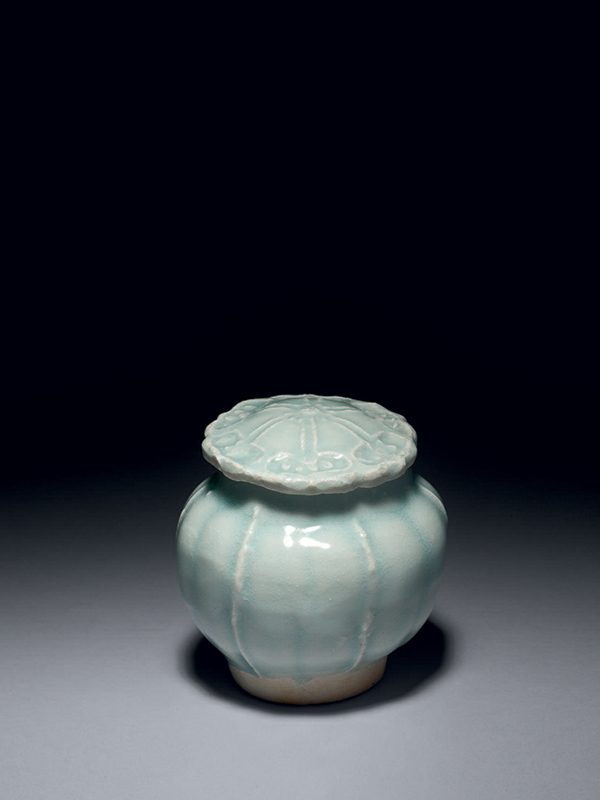Qingbai porcelain covered jar
A porcelain jar with a compressed ovoid body, supported on a straight foot, bulging out towards the short neck. The sides of the jar are moulded with vertical raised ribs. The slightly domed cover is fashioned in the form of a blossomed flower, moulded in low relief with six petals radiating from the centre. The interior and exterior of the jar are covered in a transparent glaze of pale blue hue. The cover is glazed on the outside only. The interior of the cover and the slightly recessed base are unglazed and reveal the fine-grained white porcelain body.
Produced mostly by kilns in Jianxi and Zejiang provinces, small squat jars such as the present example, sometimes made with a cover and with either lobed lips or foliate divisions, are called heyeguan (‘lotusleaf jar’) in Chinese and were made for export to other parts of Asia.[1] Precise dating of jars of this type is difficult; they were made in different sizes during the late Song dynasty and into the subsequent Yuan dynasty. A very similar qingbai jar, slightly larger in size and with a cover of similar shape and design, dated to the Southern Song dynasty, 13th century, is in the KaiYin Lo Collection.[2] Another closely comparable jar without cover and of similar size can be dated to 1224, the Southern Song dynasty.[3] A further comparable qingbai jar dated later to the Yuan dynasty (1271 - 1368) is in the collection of the Asian Art Museum of San Francisco.[4]
PROVENANCE
Collection of Prof. Michael Besser, London
- Li, He, Chinese Ceramics, the New Standard Guide, the Asian Art Museum of San Francisco, 1996, p. 203
- Lo, KaiYin, ed., Bright as Silver White as Snow – Chinese White Ceramics from late Tang to Yuan Dynasty, Yungmingtang, Hong Kong, 1998, pl. 55, p. 194
- Peng S. ed., Dated Qingbai Wares of the Song and Yuan dynasties, Hong Kong, 1998, no. 78, p. 75
- Li, He, op. cit., no. 366, pp. 177 and 203

